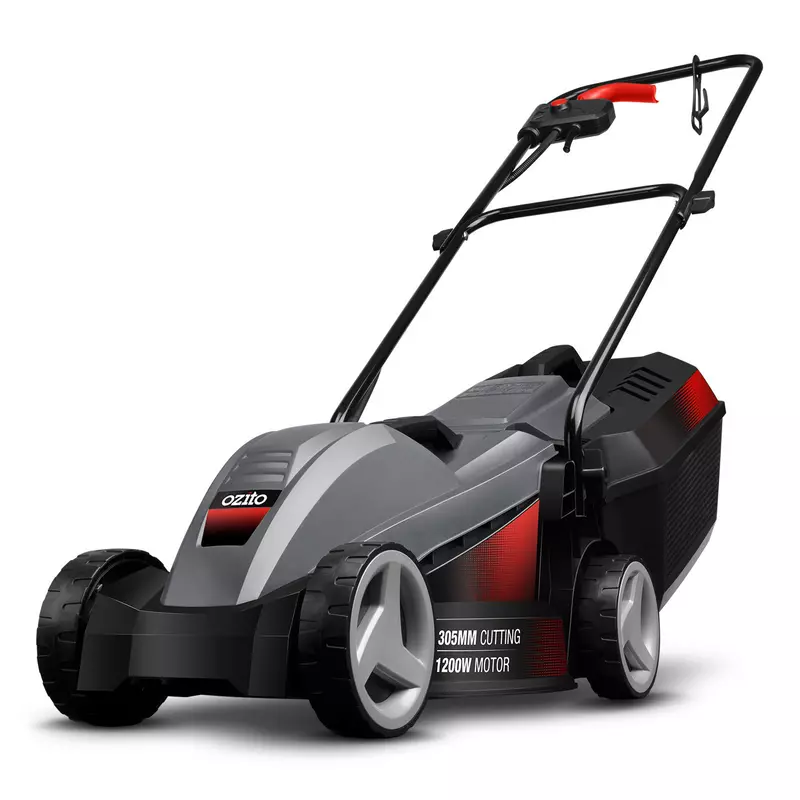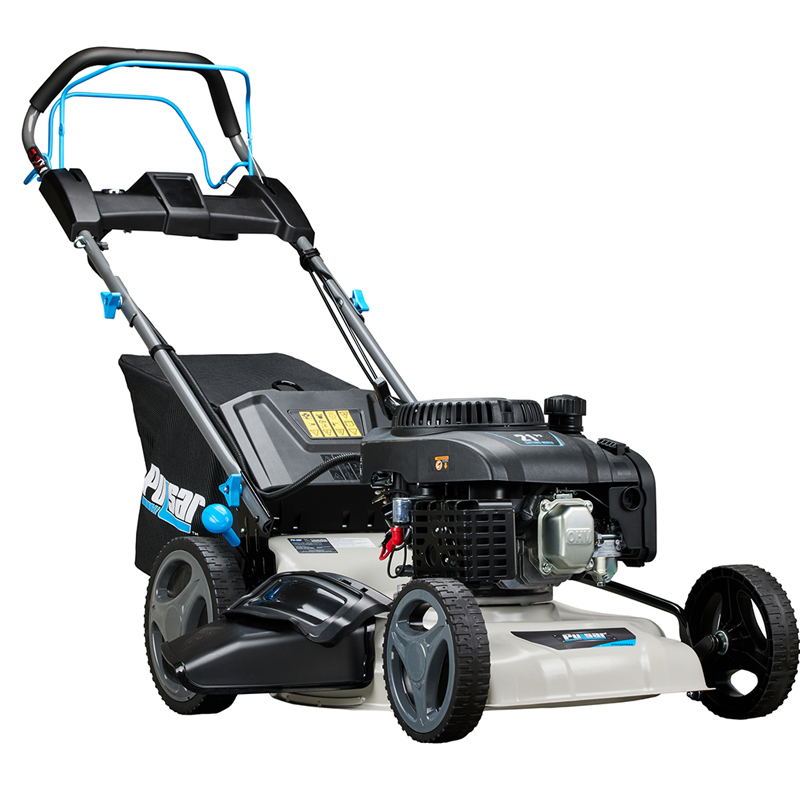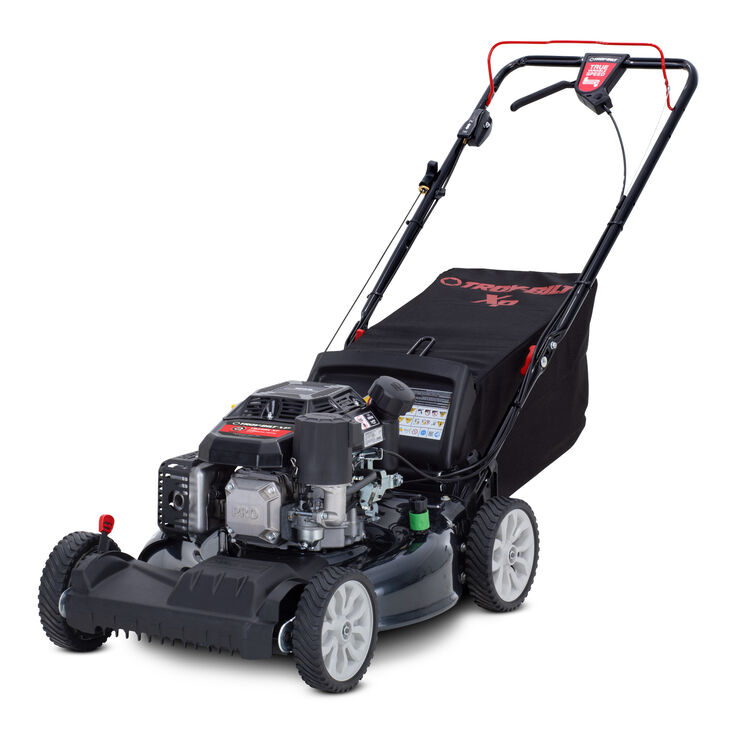
5 Key Steps to Start Your Lawn Mower
How to Start Lawn Mower?
- Check the oil and gasoline levels in the mower. If the oil is low or the gasoline is old, fill or replace as needed.
- Pull out the choke knob if your mower has one, to aid the engine in starting.
- If your mower has a primer bulb, press it a few times to give the engine extra fuel and help it start easier.
- Grasp the handle on the pull cord and slowly pull it out until you feel resistance. Then give it a sharp pull to start the engine.
- Once the engine starts, release the pull cord slowly to allow it to recoil back into place.
- If the engine does not start on the first try, wait a few seconds and then try again. If it still doesn’t start after a few attempts, check the spark plug, air filter, and fuel system for issues.
- Once the mower has started, allow it to run for a few minutes to warm up before beginning to mow.
- If your mower has an electric start, simply turn the key or push the button to start the engine. Make sure the battery is charged and connected before attempting to use the electric start feature.
Preparing to Start Your Lawn Mower
Before firing up your lawn mower, proper preparation is key. Ensuring your mower is adequately prepared helps avoid common start-up issues and promotes efficient operation.
Checking Gas and Oil Levels
Begin by ensuring your mower has enough gas and oil. For gas, open the mower’s gas cap and check the level inside the tank. It’s crucial to fill it if it’s low. For the oil, locate the oil cap, usually marked with an oil icon, and remove it to check oil levels with the dipstick. Add oil if the dip level shows it’s necessary. These steps are essential for a smooth start and to prevent engine damage.
Ensuring a Clear and Level Starting Area
Find a clear and flat area to start your mower. Remove any obstacles like rocks, toys, or large sticks that could hinder the mower’s path or damage the blades. Starting on a level surface prevents tipping and ensures safety when pulling the starter cord.
Inspecting and Maintaining the Spark Plug
Proper spark plug maintenance is crucial for starting your lawn mower effortlessly. Below, we dive into the steps to keep your spark plug in excellent condition.
Locating and Cleaning the Spark Plug
Identify the spark plug’s location, generally at the front or side of the mower’s engine. Remove the spark plug cap. Use a spark plug wrench to unscrew and remove the plug. Check for dirt or corrosion, and carefully clean it with a wire brush. If it’s in good condition, reattach it securely.
Checking for Spark Plug Wear and Replacing if Necessary
Inspect the spark plug for signs of wear such as cracks or heavy soiling. Discoloration and visible wear often indicate that it’s time to replace the spark plug. Choose a replacement that matches your mower’s specifications. After replacing it, ensure it is securely tightened to prevent any start-up issues.
Fuel System and Carburetor Priming
Understanding the Importance of Fresh Fuel
Fresh fuel is vital for starting your lawn mower. Gas can go bad over time, making it harder to start your engine. Be sure to empty old gas from the tank, and fill it with new, unleaded fuel. This simple step can prevent many starting issues related to fuel quality.
How to Prime the Carburetor for a Smooth Start
A primed carburetor ensures the right mix of air and fuel for the engine. To prime, locate the bulb near the carburetor and press it 3-5 times. This pushes fuel directly into the carburetor. Priming is critical, especially if you haven’t used the mower in a while. It preps the engine for a hassle-free start.
Adjusting the Throttle and Choke Settings
Properly setting the throttle and choke ensures a smooth lawn mower start-up.
Finding the Right Throttle Position for Start-Up
Locate the throttle lever on your lawn mower. You can typically find it near the handle or on the engine body. Set the throttle lever to a mid to high position before starting. This adjustment is crucial for the engine to run smoothly from the start.
Using the Choke for Cold Starts
Use the choke if starting the mower in cold conditions. Find the choke control, usually near the throttle. Move it to the ‘choke’ position when the engine is cold. This helps to enrich the fuel mixture, making it easier to start the engine. Once the mower starts and warms up, return the choke to its normal position.
Starting the Mower with the Starter Cord
Now that you’ve prepared your lawn mower, it’s time to start it up using the starter cord.
The Proper Technique for Pulling the Starter Cord
Stand behind your mower and firmly hold the handle. Grasp the starter cord handle with your other hand. Plant your feet solidly on the ground. Pull the cord briskly in one smooth motion. You might need several attempts. Persist until the engine starts, then let go of the cord.
Troubleshooting Tips if the Engine Doesn’t Start
If the engine doesn’t roar to life, don’t worry. Check for a few common issues. Make sure the spark plug is correctly attached. Confirm that the mower has fresh gas and oil. If you have a primer bulb, press it a few more times. Ensure the choke is on if the engine is cold. Check that the throttle is in the right position. If the cord is hard to pull, remove debris from under the mower. If these tips don’t work, refer to your mower’s manual or seek a professional’s help.
Post-Start Adjustments and Checks
Once you’ve successfully started your lawn mower, it’s essential to make a few adjustments and checks. This ensures the mower operates efficiently and safely during its use.
Adjusting the Mower Height Settings
After starting your lawn mower, adjust the cutting height. Locate the adjustment lever near the mower’s wheels. Set it to a higher or lower notch depending on your lawn’s requirements. This ensures your grass is cut to the ideal height, contributing to healthier lawn growth.
Clearing the Discharge Chute for Optimal Performance
Check the discharge chute, which is the pathway through which grass exits the mower. Remove any debris or grass clippings that might clog it. A clear chute ensures that grass is evenly discharged, maintaining consistent performance and preventing blockages that could hinder your mowing.
Routine Lawn Mower Care and Maintenance
Proper care extends a lawn mower’s life and ensures it starts easily.
Regular Cleaning and Storage
Keep your mower clean by wiping off grass and debris after each use. Store it in a dry place to prevent rust and damage.
Seasonal Maintenance Tips for Longevity
Before mowing season, change the oil, replace the air filter, and sharpen the blades. Check belts and replace if worn at the season’s end.
Troubleshooting Common Starting Issues
When your lawn mower won’t start, it can be frustrating. To get back to mowing quickly, try these troubleshooting techniques for common issues.
Dealing with a Flooded Engine
A flooded engine can prevent your mower from starting. Here’s what to do:
- Wait: Give the mower 15 minutes. Let excess fuel evaporate.
- Check: Remove the spark plug and look for wetness, indicating fuel presence.
- Dry: If wet, clean the plug with a rag, dry the gap, and reinsert.
- Try Again: After fixing the issue, attempt to start the mower.
Addressing Problems with Old or Stale Gas
Old gas can degrade and make starting the engine tough. Here’s how to resolve this:
- Empty: Safely remove old gas from the tank.
- Refresh: Fill the tank with fresh, unleaded fuel.
- Stabilize: Consider adding a fuel stabilizer to avoid future problems.
- Start: With fresh fuel, your mower’s engine should start more easily.
Remember, routine checks and maintenance will reduce the chances of these issues. Keep your lawn mower in good condition to ensure a smooth start every time.


